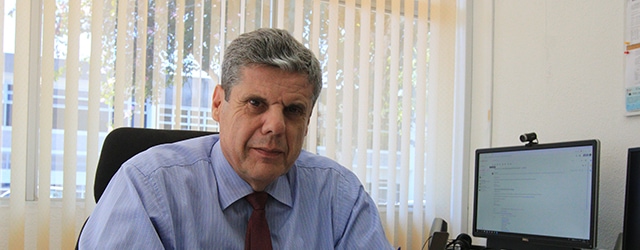
A new agricultural initiative in the Caribbean aspires to reduce both obesity and dependence on cheap food imports. Can it spur eco-nomic growth too?
After decades anchored to tourism and commodity exports, the Caribbean region is shifting to development through agriculture. Behind the change of economic diet is the need to both reduce a $4 billion annual food-imports bill in a smart way and promote a healthier diet for the islands’ population. Regional governments last fall announced their intention to pursue these twin goals with the launch of a Global Center for Resilient Agriculture in Dominica, backed by aid from the Inter-American Institute for Cooperation on Agriculture (IICA).
The headline issue behind the initiative is the rise of obesity in the region, which is rapidly adding to public health costs and expanding the inactive population. According to the World Health Organization (WHO), nearly one in four Caribbean adults is obese due to a diet rich in sugar, fat and salt. The WHO estimates that 7% of Caribbean children below age 5 are overweight compared to a global average of 5.6%.
Success at encouraging local agriculture would be welcome in a region that is struggling to find the formula for faster, more sustainable economic growth. As the new initiative takes shape, the International Monetary Fund (IMF) expects the Caribbean economy to grow 2% in 2019. “The GDP acceleration this year and in 2020 is good news, especially for the countries whose economies are based in tourism,” says Alejandro Werner, director of the IMF’s Western Hemisphere Department. “But it is not enough for a medium-term perspective of sustained development.”
A multi-pronged effort
Encouraging local food production in the Caribbean will require a multi pronged effort, says Gabriel Rodríguez Márquez, manager of projects at the IICA. Elements must include new credit lines for entrepreneurs, training and financial support from regional governments, and new projects linking food production to the tourism activity, all supporting adoption of climate-friendly agricultural technologies.
In Barbados, a leading backer of the initiative, the government is encouraging the adaptation of Blackbelly sheep to the island’s tropical climate, with an ambitious target: to increase its flock to 600,000 from just 15,000 by 2028, according to Indar Weir, minister of agriculture and food security. The objective is to improve people’s ingestion of animal protein at lower costs and to develop the leather manufacturing and, indirectly, the refrigeration and packing sectors. Apiculture and rabbit farming are other segments Barbados hopes to develop.
Adapting local agriculture to the Caribbean’s increasingly destructive weather is another goal—one the backers of the new Global Center hope will benefit other regions as well. “The most important thing is the use of technologies that can allow producers to resume their activities soon after the passage of the hurricanes, which are every year more aggressive,” says Rodríguez. “The Global Center in Dominica will be ready to provide these technologies in some years and also to replicate them in other parts of the world which are suffering the effects of the climate changes.”
Raising local agricultural production could reduce the Caribbean’s foreign food dependence and offer an escape from the tourism trap, but it also offers hope of improving its negative trade balance. For every US dollar gained from the presence of strangers on Caribbean beaches, the region currently expends another dollar on food imports, according to the IICA.
Changing that won’t be easy, however. Just as it’s a tough challenge to alter the region’s traditional preference for a fried-food diet, it’s also difficult to convince landowners to produce food rather than rent their high-value properties to hoteliers. The hope is that minds will be changed by better results.



